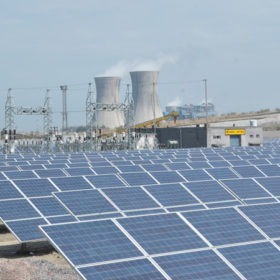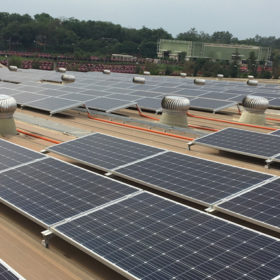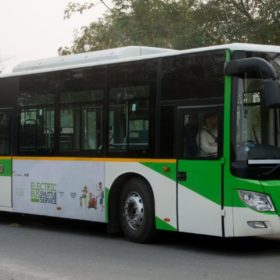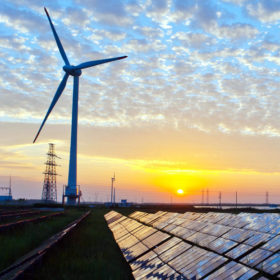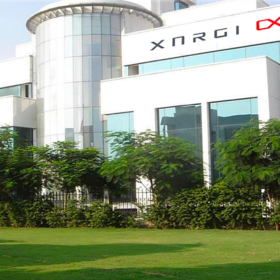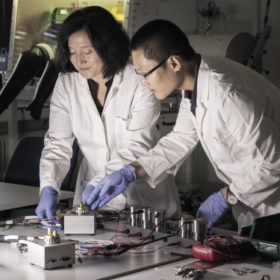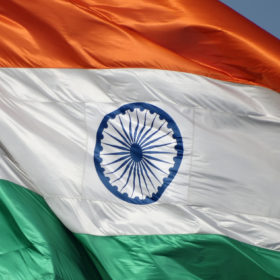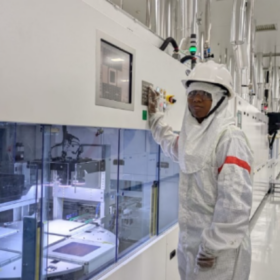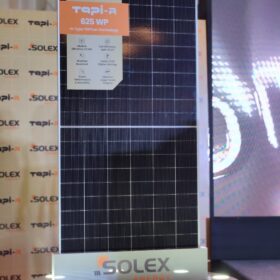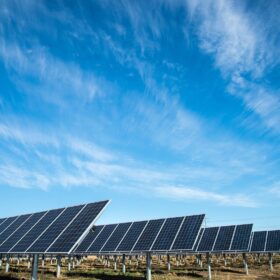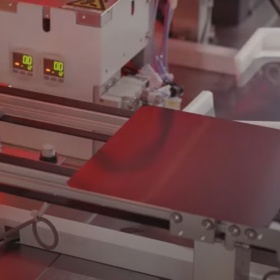SECI tenders 5 GW of grid-connected renewable projects with storage option
The selected developers shall set up renewable power projects on build-own-operate basis anywhere in India and complement the generated renewable power with thermal power, if needed, to ensure round-the-clock power supply.
Mahindra Susten to install Bangladesh’s largest solar rooftop
The renewables business of the conglomerate will undertake its first project across the border by providing engineering, procurement and construction services on a Rs12.6 crore, 3.1 MW array for a German-Bangladeshi knitwear company which will buy the power generated for Rs5.71518/kWh.
BHEL wins electric bus order for Uttar Pradesh
The entire cost of charging infrastructure for these electric buses—including cost of charging equipment and installation—shall also be borne by Bharat Heavy Electricals Limited.
Magenta Power to roll out street lamp integrated EV charger
The ChargeGrid Flare, costing around Rs 95,000, shall enable faster deployment of curbside vehicle charging with less street clutter than other approaches.
Proposals invited for joint India-South Korea research in renewable energy and green mobility
Proposals must reach the Department of Science & Technology (DST), Government of India, and Ministry of Science and ICT (MSIT) of the Republic of Korea by May 8. Each selected project will be funded for a period of three years.
Cheaper flow batteries with new membrane
US scientists claim to have discovered a membrane which could lead to cheaper large scale flow batteries. The material is an ion-selective, aqueous-compatible polymer with intrinsic microporosity known as AquaPIM and is said to have tunable thickness and high conductivity in aqueous electrolytes.
NTPC arm tenders 50 MW (AC) grid-connected solar project in Jharkhand
March 30 is the last date to bid for the solar capacity tendered by NTPC Vidyut Vyapar Nigam Limited. The project—to be set up on turnkey basis—shall come up at Panchet power station of Damodar Valley Corporation and shall be awarded through domestic competitive bidding followed by reverse auction.
US based XNRGI opens lithium-ion battery factory in India
Based in Gurugram, the factory is spread over 30,000 sq.ft and can produce 240 MWh of high-temperature battery storage solutions annually. These batteries can charge to 80% capacity within two hours and operate in excess of 55ºC, which makes them suitable for hot, humid tropical climates.
The long read: Stored potential
Demand for batteries is going nowhere but up, as new factories seem to appear almost every week with promises to power electric vehicles, consumer electronics, and grid-connected storage. But the lithium-ion technology that all of these rely on is not without drawbacks, and a whole host of new storage solutions is eager to get out of the laboratory.
India reaches 369 GW power generation capacity against peak demand of 183 GW
The all-India installed capacity for power generation is projected to rise to 619 GW by the end of 2026-27 from 369 GW as on February 29, 2020. The optimal generation mix will, however, depend on the development of storage technology and renewable energy.
